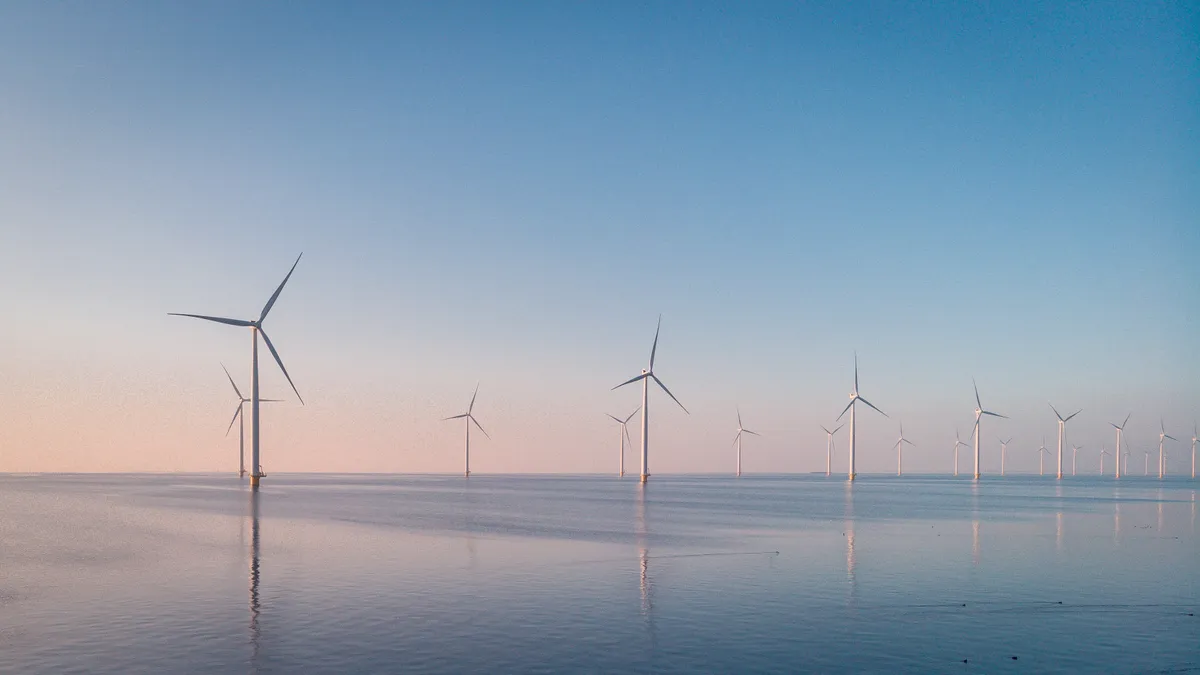Dive Brief:
- Credit rating agency Moody’s Investors Service announced Tuesday that it had downgraded its outlook for Danish energy company Ørsted from stable to negative after the company announced it would be taking impairments of up to $2.3 billion on its U.S. offshore wind portfolio.
- “Moody's expects the headwinds that Ørsted is currently facing in the US to lead to its credit metrics being weakly positioned at least until the end of 2025,” the ratings agency said, adding that an outlook stabilization would “likely require more visibility on project delivery and funding of its US offshore wind farms portfolio.”
- Ørsted CEO Mads Nipper has said that the company is still weighing “a real option to walk away” from its investments in the U.S., Bloomberg reported Tuesday.
Dive Insight:
Of the 16 offshore wind projects currently in development in the U.S., Ørsted is developing eight of them: Revolution Wind, Skipjack Wind, Ocean Wind 1 and 2, South Fork Wind, Sunrise Wind, Revolution Wind, and Block Island Wind Farm. These projects, all located along the East Coast, represent 5 GW in offshore wind capacity.
“We take note of Moody’s decision,” Ørsted’s CFO Daniel Lerup said in a comment. “Moody’s decision to put Ørsted on negative outlook is driven by the financial metrics (FFO/NIBD) being below Moody’s threshold in recent months.”
Lerup said Moody’s “continues to have confidence in” the company’s commitment to its credit rating, which remains at Baa1.
“We’ll ensure that we deliver on our financial plan to provide Moody’s the comfort needed to continue its confirmation of our current rating,” he said.
Offshore wind is facing global headwinds due to supply chain challenges and rising steel costs, and the nascent offshore wind industry in the U.S. also faces inflation and high interest rates. The Inflation Reduction Act has buffered this by providing generous tax credits, but up-front costs remain high and many projects won’t come online and begin generating income for several more years.
Several project developers have chosen to exit their power purchase agreements with plans to rebid the projects in upcoming offshore wind solicitations, citing unworkable financial pressures.
Nipper told Bloomberg that it is “inevitable” that consumer energy prices will increase as offshore wind farms are brought online in the U.S., and “if they don’t, neither we nor any of our colleagues are going to build more offshore.”
DBRS Morningstar Vice President of Project Finance and Infrastructure Kevin Beicke said in an interview that the potential for developers to abandon the market or cancel projects may result in pressure on the “governmental players involved in the Northeast to try to increase power prices.”
“The Northeast states would need to really balance their desire to increase offshore wind with what it would mean in terms of an increase in power prices for their customers,” he said. “And does that mean that lower income electricity customers may need to get more support from the state to offset the increase in power prices?”
Beicke also said that the commitment to offshore wind goals established by the Biden administration and many states means developers like Ørsted have a strong negotiating position “to pull levers to try to get these projects a little more economical and see what the government is willing to provide in terms of support.”
“You’ve got to wonder whether there's any bluffing going on here, or if the companies truly are serious about backing away from this,” he said. “I'm sure Ørsted and other developers know how strongly invested the U.S. is in trying to increase renewable energy, and offshore wind is a key part of that.”














